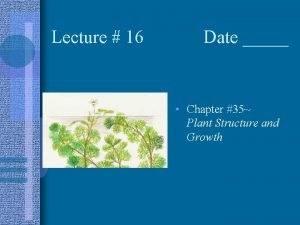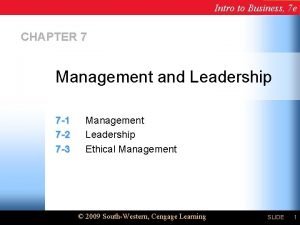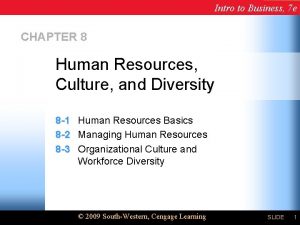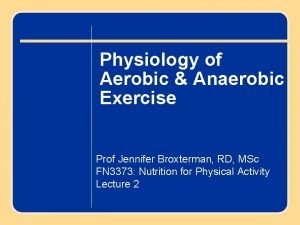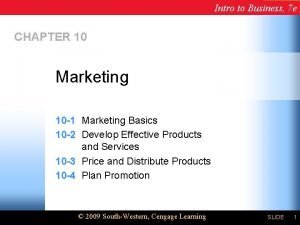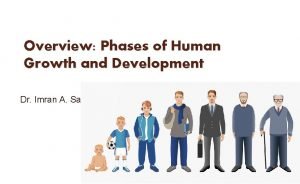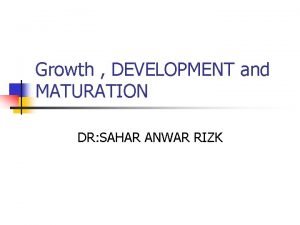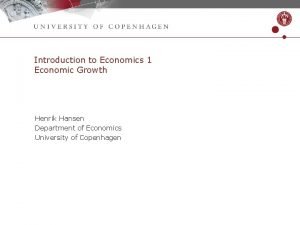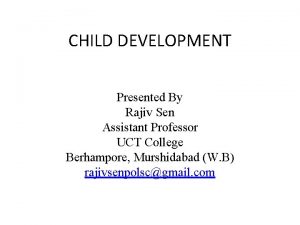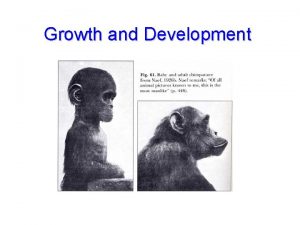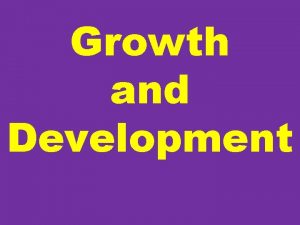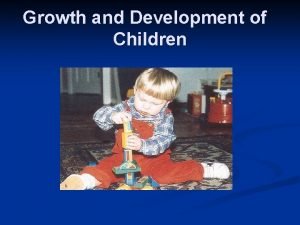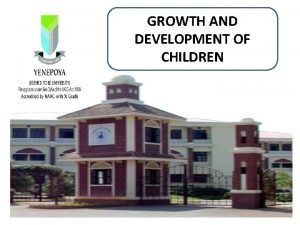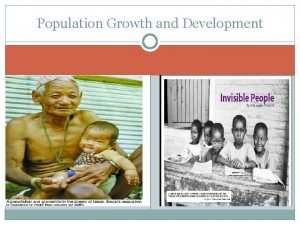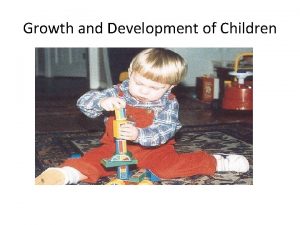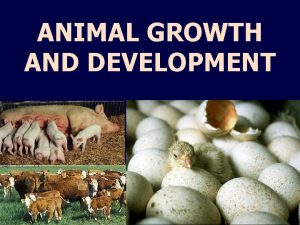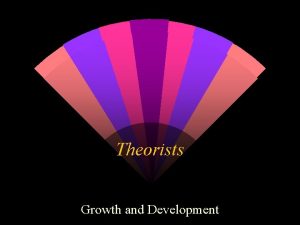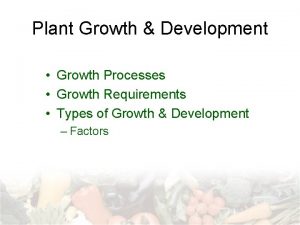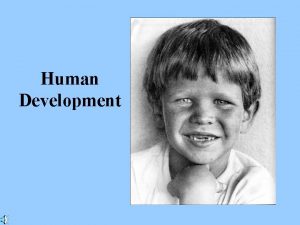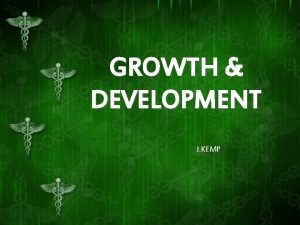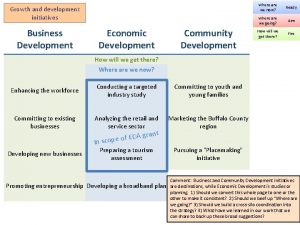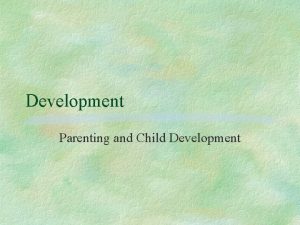Growth and Development Chapter 18 Intro Growth an































- Slides: 31

Growth and Development Chapter 18

Intro. • Growth - an increase in body weight until mature size is reached – increase in cell size and number • Development - directive coordination of all diverse processes until maturity is reached – growth, cellular differentiation, change in body shape

Prenatal Life • Sex cells, Embryo, & Fetus • Fig 18. 1 & 18. 2 • Nucleus directs differentiation of cells • Fetus - head larger first, later limbs • Largest increase in weight in the last trimester – First 2/3 mostly hyperplasia (#) – last trimester hypertrophy (size)

Figure 18. 1 Embryonic development during the first 8 days of pregnancy in cattle. (A) Unfertilized egg. (B) Four-cell embryo on day 2 of pregnancy (estrus —day 0). (C) Eight-cell embryo on day 3 of pregnancy. (D) Eight- to 16 -cell embryo on day 4 of pregnancy. (E) Very early blastocyst stage (approximately 60 cells). (F) Expanded blatocyst (>100 cells) recovered from the uterus on day 8 of pregnancy. Magnification approximately 300 . Science 211: 351. Copyright 1981 by the American Association for the Advancement of Science.

Figure 18. 2 The morphogenesis of (A) a single egg cell into (B) a morula, then to (C) a blastocyst. (D) The stage at which the two cavities have formed in the inner cell mass; an upper (amniotic) cavity and a lower cavity yolk sac. The embryonic disc containing the ectoderm and endoderm germ layers is located between cavities. (E) A cattle embryo showing the neural tube and somites. (F) The development of the 14 -day cattle embryo. Source: Colorado State University.

Figure 18. 3 Cells of selected tissues showing similarity in cell structure but not cell shape. The nucleus gives direction to differentiation of cells and their function. Source: Colorado State University.

Figure 18. 4 Growth of the fetal calf. Source: Colorado State University.

Birth • Large head, Long legs, small body – opposite of a mature animal • birth weight 5 -7% of mature weight • Leg length 60% of mature • Height at withers 50% of mature

Poultry Devel. • Chick development much faster than farm mammals • blastoderm - germ spot in egg • Incubation – temperatue 99. 5 -100 o. F – relative humidity 60 -75% – turn every 1 -8 hours – adequate oxygen

Poultry Devel. • Chick Development Fig. 18. 5 • Egg membranes – allantois - air exchange – amnion - protection from mechanical shock – yolk sac - tissue over yolk, digests yolk material for developing embryo – chorion - surrounds amnion and yolk sac

Figure 18. 5 Changes in the development of the chick embryo with associated changes in membranes and other contents of the egg.

Tissues • Types of tissues – muscle – nerves – connective and epithelial • Organ - group of tissues that perform specific function • System - group of organs working together

Systems • Skeletal System Fig. 18. 6 & 18. 7 – Protects vital organs – form & shape to body • Muscle System Fig. 18. 8 & 18. 9 – skeletal - movement (red meat) – smooth - digestive, repro, and urinary – cardiac - heart • Endocrine System - secretes hormones fig 18. 11 and Table 18. 2

Figure 18. 6 Skeletal system of the horse.

Figure 18. 7 Skeletal system of the chicken.

Figure 18. 8 Primary muscles of the beef steer.

Figure 18. 9 Primary muscles of the turkey.

Figure 18. 11 Primary endocrine organs of the sheep.

Systems • Circulatory system fig. 18. 10 – heart and vessels – arteries - move blood away from heart – veins - move blood to heart – lymph - move lymph to heart • Blood transports – oxygen, nutrients, wastes, and hormones

Figure 18. 10 Circulatory system of the dairy cow (A = artery, V = vein).

Growth Curves and Carcass Compostition • Growth curves - Fig 18. 12 - 18. 14 • Linear at first then levels out • Carcass Composition – Fat, lean, and bone – ratio of muscle to bone increases as animal weight increases – Fig. 18. 15

Figure 18. 12 Representative growth curves for (A) beef cattle, (B) dairy cattle, (C) horses, (D) sheep, (E) swine, and (F) broilers. Adapted from Battaglia and Mayrose, Handbook of Livestock Management Techniques (New York: Macmillan, 1981). Copyright © Macmillan Publishing Co.

Figure 18. 14 (1983). Tissue growth relative to increased live weight. Adapted from Berg and Walters

Figure 18. 15 Effects of different maturity types on fat composition. Adapted from Berg and Walters (1983).

Carcass Compostition • Effects of frame size – earlier maturing breeds have increased fat deposition at lighter weights • Effects of Sex – heifers deposit fat earlier than steers or bulls – barrows are fatter than gilts

Figure 18. 16 The relationship of frame size and weight to carcass composition in beef steers. Source: Colorado State University.

Figure 18. 17 Influence of sex on carcass composition in (A) beef cattle and (B) swine. Adapted from Berg and Walters (1983). Source: American Society of Animal Science.

Carcass Compostition • Effect of muscling (fig 18. 19) – higher proportion of fat associated with a lower proportion of muscle – 3 lb muscle : 1 lb bone • thinly muscled slaughter steers – 5 lb muscle : 1 lb bone • thickly muscled cattle – double or heavy muscled can sometimes be a problem

Figure 18. 18 Effects of light, heavy, and double muscling on carcass composition compared to average muscling (bold lines). Adapted from Berg and Walters (1983).

Age and Teeth • Estimate age Table 18. 3 • ability to graze effectively • mouthed – classify into age groups • In sandy areas may occur faster • broken mouthed – some incisors have been lost

Figure 18. 19 Incisor teeth of cattle of different ages.
 Infancy psychosocial development
Infancy psychosocial development Chapter 35 plant structure growth and development
Chapter 35 plant structure growth and development Vascular ray
Vascular ray Define growth analysis
Define growth analysis Pith
Pith Primary growth and secondary growth in plants
Primary growth and secondary growth in plants Chapter 10 marketing test answers intro to business
Chapter 10 marketing test answers intro to business Introduction to business chapter 7
Introduction to business chapter 7 Introduction to business chapter 8
Introduction to business chapter 8 Anaerobic exercise physiology
Anaerobic exercise physiology Forensic science chapter 1
Forensic science chapter 1 Intro to business chapter 10
Intro to business chapter 10 Stages of human growth and development pictures
Stages of human growth and development pictures Theory of growth and development
Theory of growth and development Stages of human growth and development pictures
Stages of human growth and development pictures Middle adulthood social changes
Middle adulthood social changes Pretest growth development and sexuality
Pretest growth development and sexuality Growth development maturation
Growth development maturation Various stages of growth are
Various stages of growth are 6 life stages
6 life stages Economic development vs economic growth
Economic development vs economic growth Personal development domains
Personal development domains Growth and development pictures
Growth and development pictures Middle childhood growth and development
Middle childhood growth and development Distinguish between growth and development
Distinguish between growth and development Summer camp 2014
Summer camp 2014 Stages of rice
Stages of rice Principles of growth and development
Principles of growth and development Prudent financial management practices
Prudent financial management practices Cytokinin function
Cytokinin function Economic growth and development
Economic growth and development Growth and development
Growth and development

